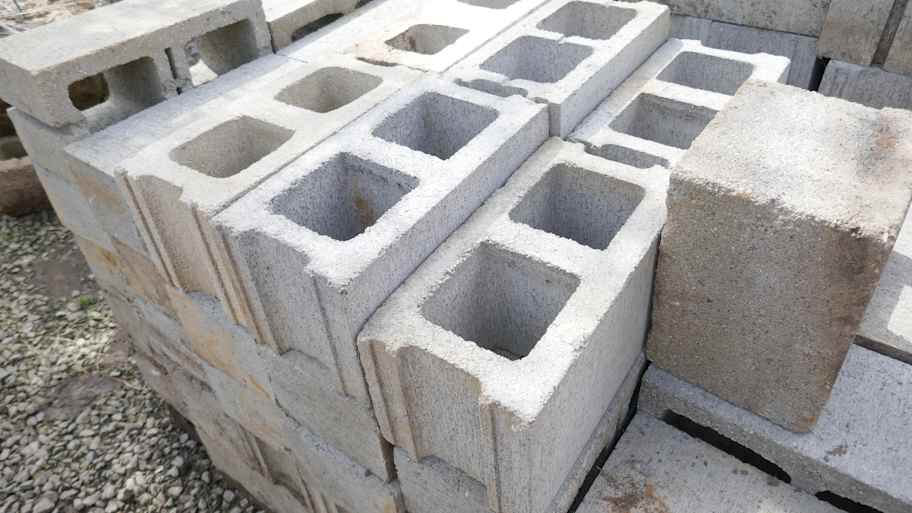
Looking to elevate your backyard aesthetic with a patio? Use this paver patio cost guide to help you estimate your total project cost before you get started.
Because eyeballing it only works half the time


Cinder blocks are often used to build foundations, storm shelters, and walls.
To estimate the number of cinder blocks, you need to know the square footage.
A local pro can help you estimate the correct number of cinder blocks you’ll need.
How many cinder blocks do I need? Whether you’re tackling foundation repair, building a cinder block wall, assembling a storm shelter, or undergoing another cinder block project, you can estimate the amount of materials you need with this cinder block calculator.
Refer to the table below to estimate how many cinder blocks and bags of mortar you’ll need based on the square footage of your project. This is a good starting point, but it will ultimately depend on how large the cinder blocks are.
| Square Feet | Number of Cinder Blocks | Number of Bags of Mortar |
|---|---|---|
| 50 | 45 | 2 |
| 100 | 113 | 4 |
| 150 | 169 | 6 |
| 200 | 225 | 8 |
| 250 | 281 | 10 |

The first step to estimating how many cinder blocks you need for your project is to determine the area of the project in square feet. To do that, use the following formula:
Area = Length x Width
Next, calculate the square footage of the blocks you’re using by multiplying the length by the width of the blocks and then dividing by the number of square inches in a foot (144).
Block area (in square feet) = (Length x Width) / 144
A standard-size cinder block is 16 inches long and 8 inches high, which is 0.89 square feet.
Finally, divide the square footage of the total project by the square footage of the cinder block to get the number of cinder blocks you need to complete the project and ultimately estimate the cinder block wall cost.
Number of Cinder Blocks = Project Square Footage / Cinder Block Square Footage
When calculating how many cinder blocks you need, you're usually measuring a rectangular or square area, like for a wall, raised bed, or patio. In these cases, you find the total square footage of the space and divide it by the area of one block (in square feet) using a tape measure.
If you're using blocks for edging or borders, you’ll measure in linear feet instead. Some projects may have irregular shapes, but you can break those into smaller rectangles or triangles to simplify the math. Always add 5 to 10% extra to account for cuts or mistakes.
If you need help with your cinder block wall, foundation, or storm shelter, you can hire a local block wall professional who will be able to calculate how many cinder blocks you’ll need as well as the amount of mortar and then install the project. If you’re working on repairing your foundation, you can contact a foundation repair specialist near you to take a look and give you a quote.
Joe did an excellent job on multiple projects, including cabinet repair, patio pavers, drywall, and bath hardware issues. We were impressed by his ability to trouble shoot difficult issues. He was professional and hardworking. I’d absolutely recommend him to anyone and will call him again. I...
After purchasing our house last summer, we needed to refresh our front lawn. We got multiple different quotes and GM Outdoor Hardscape was detailed and well presented. Giovanni and his crew exceeded our expectations in every way. The finished product incredibly well done. Every step of the...
Affordable, prompt and quick completion. Great customer service
Overall loved there services definitely will hire them again.
Precision is an excellent company and their Team Members are professional and knowledgeable. They are the best
A and C concrete was incredibly fast, professional and fairly priced. They did a bid and completed the work timely and without issue. The workers were professional and helpful when suggesting plans to increase the integrity and visual appeal of the project. I would highly recommend them to...
Kyle from Complete Home Care was amazing. He came for three days. Always text me before coming. Completed the job and went over and above. Great work ethic and integrity. Kind and caring and it reflected in his work. I will definitely call him again.
Replaced faucet on kitchen sink with one I provided. Took just an hour. Did good job.
A&B Hardscape is a fantastic company! Alberto Ballesteros and his crew were amazing!!! They did the most beautiful job helping me create a patio under the deck of my townhome!!! I am so very grateful that I hired this team. They were friendly, helpful and stayed in contact prior to the...
Quick gone and done and finished.
From average costs to expert advice, get all the answers you need to get your job done.

Looking to elevate your backyard aesthetic with a patio? Use this paver patio cost guide to help you estimate your total project cost before you get started.

Need to know how much decomposed granite costs? Learn about the factors that affect decomposed granite's price and how much you need for your project.

Porcelain pavers are a high-end option for your home’s hardscaping that can completely transform your outdoor space. Here’s how much porcelain pavers cost.

Interlocking pavers fit together easily, like puzzle pieces, using the power of friction to disperse weight, making them ideal for driveways and walkways.

Find out how much a concrete retaining wall costs. Get average prices, cost factors, and expert tips to budget and save on your installation.

Lay pavers on grass with this simple 10-step guide and elevate your outdoor space. Pavers are lasting, affordable, and easy to maintain.